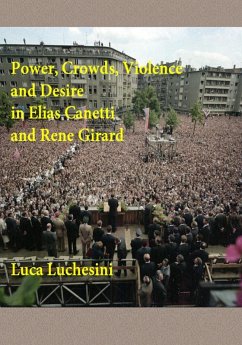I believe and try to prove that Canetti actually complements Girard findings so that the two must be adopted to account for the complex dynamics and interconnections between power, violence and religion, both in the early stages of human development and in the following evolution of history.
The book is structured as follows: Chapter 1 provides some biographical background about Elias Canetti. Chapter 2 summarizes the theory of crowds and Chapter 3 instead introduces the subject of power. In Chapter 4 I will try to clarify the connection between the two concepts, while Chapter 5 puts Canetti in relationship with Girard research about mimetic desire, crowds and the scapegoat mechanism. Finally, Chapter 6 sketches some lines of further reflection about the meaning of political action at large after the illuminating and desacralizing critique that these two thinkers have carried out around some of the core categories that every human being experiences in her life.
Dieser Download kann aus rechtlichen Gründen nur mit Rechnungsadresse in A, B, CY, CZ, D, DK, EW, E, FIN, F, GR, H, IRL, I, LT, L, LR, M, NL, PL, P, R, S, SLO, SK ausgeliefert werden.









